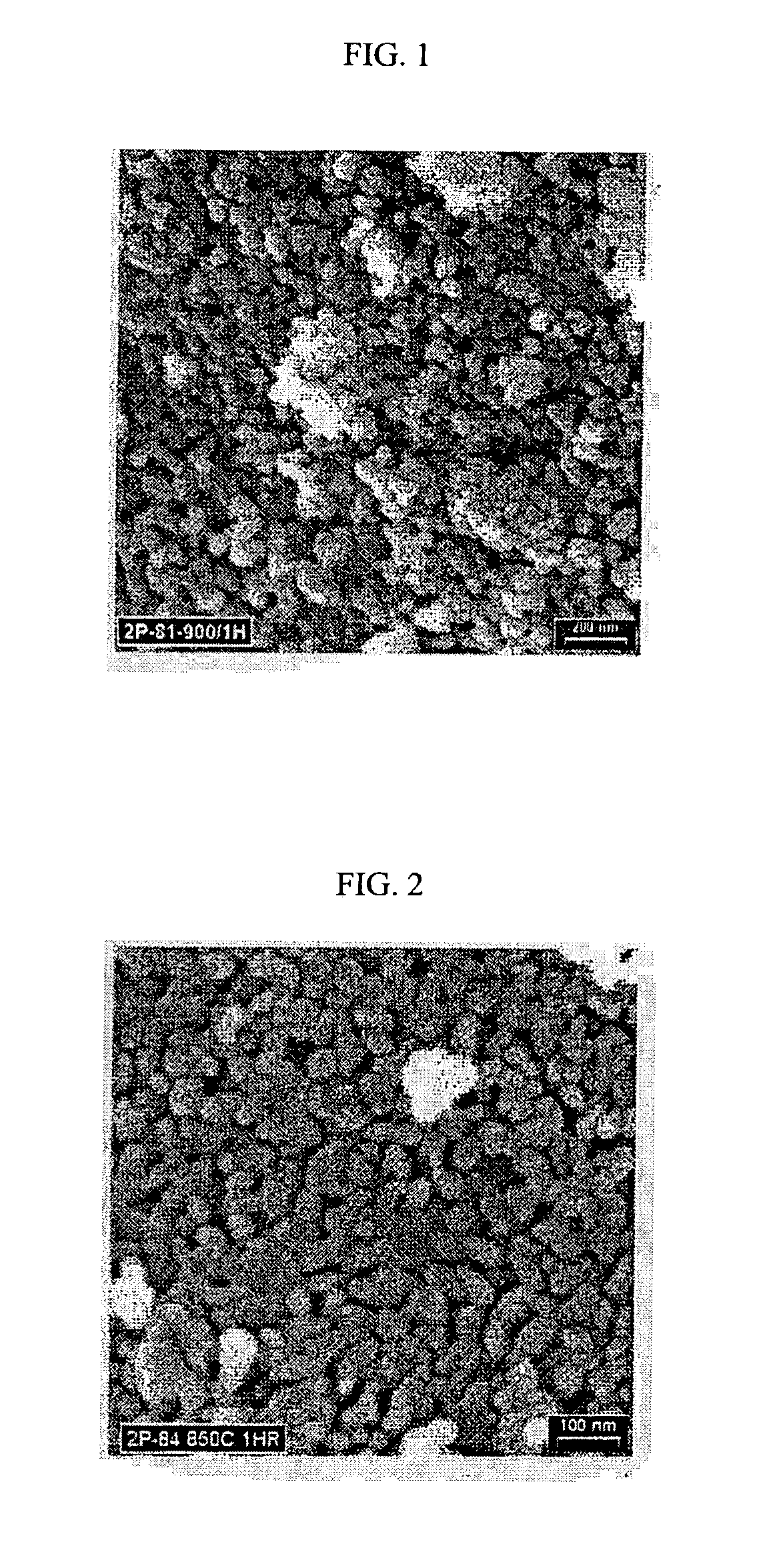Nanoporous ultrafine alpha-alumina powders and sol-gel process of preparing same
a technology of alpha-alumina powder and nanoporous alpha-alumina, which is applied in the field of nanoparticles, can solve the problems of mechanical strength of -alumina, high impurity contamination, and introduction of high impurities
- Summary
- Abstract
- Description
- Claims
- Application Information
AI Technical Summary
Benefits of technology
Problems solved by technology
Method used
Image
Examples
example 1
[0053]Polycrystalline α-alumina particles were dispersed in water by high energy attrition milling using high purity alumina media as the milling media. The slurry such prepared was used as seeds (27.5%) for the following processing for nanosized alumina. 42.5 g of the seeds slurry was mixed with 2130 g of DI water and 62.3 g of nitric acid (˜70%) under vigorous stirring using a mixer. To the solution, 577 g of commercial aluminum sec-butoxide was added and stirred for 2 hours at room temperature. The solution was further heated up to temperature 80C under vigorous stirring and maintained at the temperature until gelation taked place. The gel was transferred to a stainless container and dried in an oven at 80C. The dried gel was fired in a box furnace at 880C for 1 hour and cooled down to room temperature. The fired material was confirmed to be ˜98% α-alumina powder on X-ray diffraction and He density measurement. SEM showed that the primary particle is 40-60 nm in size. The fired p...
example 2
[0054]127.5 g of the same α-alumina seeds as in Example 1 was mixed with 6350 g of water and 561.5 g of HCl (35%) in a Teflon lined stainless container. On the other hand, 1730 g of aluminum butoxide was mixed with 5100 g of anhydrous ethanol in a glass container. The two solutions were further mixed in the Teflon lined stainless container and stirred vigorously on a hotplate. The solution was heated up to 80C slowly and maintained at the temperature until the solution becomes viscous. The gel-like material is transferred to a stainless pan and dried in a drying oven. The dried material was fired at 820C for 1 hour in a box furnace. The fired powder was confirmed to be ˜98% of α-alumina based on X-ray and He-density measurements, with surface area of the powder being 45 m2 / g. SEM shows that the primary particles are 40-60 nm in size. The powder was dispersed in DI water and charged in an attrition miller and milled for 6 hours. The milled particles had a D50˜75 nm, based on a dynami...
example 3
[0055]120 g of the alfa-alumina seeds, as same as in Example 1, was dispersed in 5000 g of DI water, to which 3000 g of hydrous aluminum nitrate was added. The solution was heated on a hotplate to temperature 75C. 1540 g of ammonium hydroxide (28-30%) was drop wise added to the solution under vigorous stirring. The solution was stirred at the temperature until it became too viscous to stir. After dried in an oven, the gel-like material was first fired at 500C to remove the NOx and then fired at 880C to complete the transformation to alfa-alumina. The fired powder was confirmed to be ˜95% alfa-alumina based on X-ray diffraction and He-density measurement. The specific surface area was 38 m2 / g from a BET measurment. On SEM, the primary particles are 50-70 nm in size. The fired powder was mixed with DI water and milled in an attrition miller using a high purity alumina media. The milled slurry gave a D50˜75 nm, from on a dynamic particle size analyzer.
PUM
| Property | Measurement | Unit |
|---|---|---|
| Temperature | aaaaa | aaaaa |
| Temperature | aaaaa | aaaaa |
| Temperature | aaaaa | aaaaa |
Abstract
Description
Claims
Application Information
 Login to View More
Login to View More - R&D
- Intellectual Property
- Life Sciences
- Materials
- Tech Scout
- Unparalleled Data Quality
- Higher Quality Content
- 60% Fewer Hallucinations
Browse by: Latest US Patents, China's latest patents, Technical Efficacy Thesaurus, Application Domain, Technology Topic, Popular Technical Reports.
© 2025 PatSnap. All rights reserved.Legal|Privacy policy|Modern Slavery Act Transparency Statement|Sitemap|About US| Contact US: help@patsnap.com

